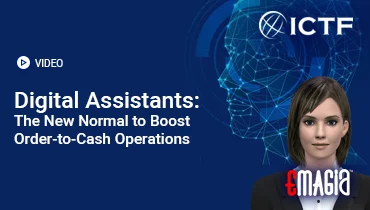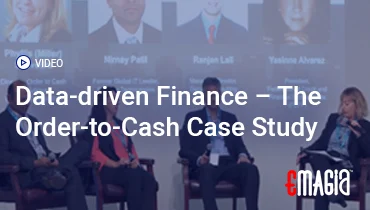Imagine your business extending credit to a new customer, or perhaps investing in a bond. You’re anticipating a future payment, a healthy return. But what if that payment never arrives? What if the client defaults, or the investment goes south? This isn’t just a minor hiccup; it can be a devastating blow to your cash flow, profitability, and even the very existence of your business. This, in a nutshell, is the reality of credit risk.
In today’s fast-paced and interconnected global economy, every business, regardless of its size or industry, faces some level of credit exposure. From extending payment terms to customers (which is essentially granting them credit) to making strategic investments, the potential for financial loss due to a counterparty’s inability or unwillingness to meet their obligations is ever-present. Ignoring this risk is like sailing without a compass in stormy seas – dangerous and ultimately unsustainable.
This is precisely why credit risk management matters so profoundly. It’s not just a buzzword for financial institutions; it’s a critical discipline that impacts every aspect of your financial health. This comprehensive guide will peel back the layers, exploring what credit risk truly is, why its effective management is non-negotiable for your business, how to build a robust framework, and the modern challenges and best practices in this vital field. Get ready to learn how to protect your assets, optimize your lending decisions, and ensure the long-term resilience and growth of your enterprise.
What is Credit Risk? Decoding the Core Concept of Financial Exposure
Before we delve into why credit risk management matters, let’s get crystal clear on what credit risk actually is. It’s a fundamental concept in finance that every business leader, investor, and financial professional needs to understand.
Defining Credit Risk: The Threat to Your Expected Payments
Credit risk refers to the potential for financial loss that arises from a borrower or counterparty failing to meet their contractual obligations. In simpler terms, it’s the risk that someone who owes you money won’t pay you back, either partially or in full, and on time. This could be a customer defaulting on an invoice, a bond issuer failing to make interest payments, or a bank customer not repaying a loan.
It’s essentially the risk of losing money due to credit events. This uncertainty impacts anyone extending credit, from a small business offering payment terms to a global bank lending billions. Understanding this threat is the first step towards comprehending why credit risk management matters so much.
Types of Credit Risk: Understanding the Different Flavors of Exposure
Credit risk isn’t a single, monolithic threat; it comes in various forms, each requiring a slightly different approach to identification and mitigation.
-
Default Risk (Borrower Risk): The Most Direct Threat
This is the most common type of credit risk. It’s the direct risk that a specific borrower (whether an individual, a company, or a government) will fail to repay their debts according to the agreed-upon terms. This could be due to financial distress, bankruptcy, or simply an unwillingness to pay. For businesses, this often manifests as customers not paying their invoices (Accounts Receivable default).
-
Concentration Risk: Too Many Eggs in One Basket
Concentration risk arises when a large portion of a company’s credit exposure is concentrated in a single borrower, industry, geographic region, or type of security. If that particular area or borrower experiences financial difficulties, the impact on your business can be disproportionately severe. For example, relying too heavily on one major customer can expose you to significant concentration default risk.
-
Country Risk / Sovereign Risk: Broader Economic and Political Threats
This type of credit risk relates to the possibility that a country’s government might default on its debt, or that political or economic conditions in a particular country could prevent borrowers within that country from honoring their obligations. This is particularly relevant for businesses engaged in international trade or investment.
-
Operational Credit Risk: Internal Process Failures
While often seen as a separate category, operational risk can directly lead to credit losses. This includes risks arising from internal process failures, human error, system malfunctions, or fraud that impact your ability to assess or manage credit effectively. For example, errors in credit scoring or incorrect payment processing can contribute to increased credit risk.
Recognizing these distinct types is crucial for developing a comprehensive strategy for why credit risk management matters in your overall financial planning.
The Critical Importance: Why Credit Risk Management Matters to Your Bottom Line
It’s no exaggeration: effective credit risk management isn’t just good practice; it’s absolutely vital for the survival and prosperity of any business. It acts as a financial shield, protecting your most valuable assets and enabling sustainable growth.
Direct Impact on Cash Flow and Liquidity: The Lifeblood of Your Business
Cash flow is the oxygen that keeps your business alive. When customers don’t pay on time, or at all, it directly chokes your incoming cash. This creates liquidity problems, making it difficult to pay your own suppliers, meet payroll, or invest in new opportunities. Effective credit risk management actively works to ensure that the money owed to you actually arrives, keeping your cash flow healthy and predictable.
By proactively assessing and mitigating the risk of non-payment, businesses can reduce their Days Sales Outstanding (DSO) and accelerate their cash conversion cycle, directly leading to better liquidity.
Protecting Profitability and Preventing Bad Debt: Keeping Your Earnings Intact
Every dollar that’s not collected from an invoice or a loan represents a direct hit to your profitability. This uncollectible revenue becomes “bad debt.” While some level of bad debt is inevitable in any credit-based operation, robust credit risk management aims to minimize it significantly.
By making smarter lending decisions and implementing effective collection strategies, businesses can prevent a substantial portion of potential losses, directly safeguarding their bottom line and ensuring that the profits you earn on paper translate into real financial gains.
Safeguarding Capital and Financial Stability: Building a Resilient Foundation
Uncontrolled credit risk can erode your company’s capital base. Significant defaults can lead to write-offs that directly reduce your equity and weaken your financial stability. This can make it harder to secure future financing, attract investors, or withstand economic downturns.
Credit risk management acts as a guardian of your capital, ensuring that your financial foundation remains strong and resilient, even when faced with individual defaults. It’s about building a business that can weather financial storms.
Enhancing Business Growth and Opportunity: Lending with Confidence
Paradoxically, sound credit risk management isn’t just about avoiding losses; it’s also about enabling growth. By having a clear understanding of risk, businesses can confidently extend credit to new, reliable customers, enter new markets, or offer more competitive payment terms.
Without proper risk assessment, a business might be overly cautious and miss out on valuable growth opportunities, or conversely, take on too much risk and suffer unsustainable losses. It allows for strategic lending, fueling expansion while staying protected.
Maintaining Reputation and Trust: Your Business’s Priceless Asset
A history of poor collections or frequent write-offs can signal to partners, investors, and even other customers that your business struggles with financial management. This can damage your reputation and erode trust within the market.
Conversely, a well-managed credit portfolio demonstrates financial discipline and reliability, enhancing your standing. Credit risk management helps you maintain strong relationships with customers by having clear terms and fair processes, while also protecting your overall market image.
Ensuring Regulatory Compliance: Staying on the Right Side of the Law
For many industries, especially financial services, credit risk management isn’t just good business practice; it’s a regulatory requirement. Financial institutions face strict guidelines from governing bodies to ensure they properly assess, monitor, and report on their credit exposures. Failure to comply can lead to hefty fines, reputational damage, and operational restrictions.
Even for non-financial businesses, robust credit practices align with general accounting standards and can prevent legal disputes related to debt collection. This is another crucial reason why credit risk management matters for operational continuity.
How Credit Risk Management Works: A Strategic Framework for Protection
Effective credit risk management isn’t a one-off task; it’s a continuous, multi-faceted process involving strategy, assessment, monitoring, and recovery. Let’s break down the key stages in building a robust framework.
Credit Policy Formulation: Setting the Rules of Engagement
Every strong credit risk management strategy begins with a clearly defined credit policy. This document acts as the blueprint for all credit-related decisions within the organization.
- Defining Risk Appetite: What level of risk is your business willing to tolerate? This sets the overall tone for lending.
- Establishing Credit Terms: What are your standard payment terms (e.g., Net 30, Net 60)? When are discounts offered?
- Approval Authority Matrix: Who can approve what level of credit? This ensures appropriate oversight and consistency.
- Collection Procedures: What steps will be taken if payments are late? This outlines the dunning process.
A well-communicated credit policy ensures consistency, reduces subjective decisions, and forms the bedrock of a sound credit risk management approach.
Credit Assessment and Underwriting: Knowing Your Customers (and Their Risk)
Before extending credit, you need to understand the likelihood of repayment. This is the heart of credit risk management.
-
Gathering Information: Building the Customer Profile
This involves collecting various data points about the potential borrower. This could include financial statements, trade references (from other suppliers they’ve done business with), comprehensive credit reports from commercial bureaus (like Dun & Bradstreet, Experian Business), and even public records or news about the company. The more data, the clearer the picture.
-
Analyzing and Scoring: The 5 C’s of Credit (and Beyond)
Once data is gathered, it’s analyzed. A common framework is the “5 C’s of Credit”:
- Character: The applicant’s reputation for honesty and integrity (e.g., payment history from trade references).
- Capacity: The applicant’s ability to repay the debt (e.g., cash flow, debt-to-income ratio).
- Capital: The applicant’s financial reserves and net worth (e.g., equity, assets).
- Collateral: Assets pledged to secure the debt, if any (reducing the creditor’s risk).
- Conditions: Economic conditions or industry-specific factors that might affect repayment ability.
Modern credit risk management often uses sophisticated credit scoring models, sometimes AI-driven, to quantify this risk. This helps determine if and why credit risk management matters for this specific client.
-
Setting Credit Limits and Terms: Tailoring the Exposure
Based on the assessment, appropriate credit limits are set – the maximum amount of credit extended. Payment terms are also finalized, reflecting the assessed risk profile. A higher risk might mean stricter terms or a lower limit.
Portfolio Monitoring and Early Warning Systems: Vigilance in Action
Once credit is extended, the work isn’t over. Continuous monitoring is crucial to detect changes in a borrower’s risk profile before they become major problems.
- Regular Reviews: Periodically review customer credit profiles, especially for large exposures.
- Behavioral Monitoring: Track payment patterns for signs of stress (e.g., increasing late payments, taking longer to pay).
- External Triggers: Monitor news, industry reports, and changes in credit bureau scores for any red flags.
- Automated Alerts: Implement systems that send automated alerts when certain risk thresholds are crossed, triggering immediate action.
Early detection is a cornerstone of effective credit risk management, allowing for proactive intervention.
Collections and Recovery Strategies: Mitigating Losses When They Occur
Despite best efforts, some defaults will happen. A robust credit risk management framework includes clear strategies for collections and recovery.
- Tiered Collection Process: Implement a systematic approach to follow up on overdue payments, escalating from friendly reminders to more formal demands and, if necessary, legal action.
- Payment Plans and Restructuring: For viable customers experiencing temporary difficulties, offer flexible payment plans or debt restructuring to maximize recovery while maintaining the relationship.
- Write-off Procedures: Establish clear guidelines for when debts are deemed uncollectible and formally written off, ensuring accurate financial reporting.
Reporting and Analytics: Learning from Your Data to Enhance Credit Risk Management
The final, crucial stage involves analyzing performance to continuously improve your credit risk management processes.
- Key Performance Indicators (KPIs): Track metrics like Days Sales Outstanding (DSO), bad debt write-off rates, collection effectiveness index, and dispute resolution times.
- Trend Analysis: Identify patterns in payment behavior, assess the effectiveness of credit policies, and pinpoint areas for improvement.
- Strategic Insights: Use data to refine your credit models, adjust lending strategies, and make more informed decisions about risk appetite and growth opportunities.
This continuous feedback loop is essential for evolving and strengthening your credit risk management capabilities.
Key Challenges in Credit Risk Management Today: Navigating a Dynamic Landscape
While the principles of credit risk management remain constant, the environment in which businesses operate is anything but. Modern challenges demand agile and sophisticated approaches to effectively manage risk.
Volatile Economic Conditions: The Shifting Sands of Business
Economic cycles are inherently unpredictable. Recessions, inflation, interest rate hikes, or sudden market shifts can quickly impact your customers’ ability to pay. This volatility makes accurate forecasting of credit risk incredibly challenging.
- Unpredictable Customer Performance: Even historically reliable customers can face sudden financial distress in a downturn.
- Broader Market Impact: Sector-specific shocks can ripple through an entire industry, increasing default risk across a segment of your portfolio.
Staying ahead of these macro-economic shifts is a constant battle in credit risk management.
Globalized Trade and Diverse Regulations: A Complex Web of Rules
For businesses operating internationally, the complexity of credit risk management multiplies significantly.
- Varying Legal Frameworks: Each country has different bankruptcy laws, collection practices, and commercial regulations.
- Currency Fluctuations: Exchange rate volatility can impact the real value of receivables from international customers.
- Political Instability: Geopolitical events can suddenly introduce unforeseen country risk, making collections impossible.
Managing these diverse international factors is a major hurdle for effective credit risk management for global enterprises.
The Rise of Digital Fraud: New Threats, New Defenses
As transactions increasingly move online, businesses face new forms of credit-related fraud, from identity theft in credit applications to sophisticated payment scams. Detecting and preventing these requires specialized tools and vigilance.
- Synthetic Identity Fraud: Fraudsters combine real and fake information to create new identities for credit.
- Payment Diversion Scams: Criminals trick businesses into sending payments to fraudulent bank accounts.
Staying one step ahead of these evolving digital threats is a constant and demanding aspect of modern credit risk management.
Balancing Risk and Revenue Growth: The Eternal Tug-of-War
Perhaps the most persistent challenge is finding the optimal balance between minimizing credit risk and maximizing revenue. Overly strict credit policies might lead to fewer bad debts but could also choke sales and growth opportunities by turning away viable customers. Conversely, being too lenient can boost sales but expose the business to unsustainable losses.
Achieving this delicate balance requires sophisticated analysis, a clear understanding of risk appetite, and continuous adjustment based on market conditions. It’s a strategic tension at the heart of why credit risk management matters.
Data Overload and Silos: Finding Insights in the Noise
Businesses today collect vast amounts of data, but often it resides in disparate systems – ERPs, CRMs, credit bureaus, collection systems. This creates data silos, making it incredibly difficult to get a unified, real-time view of a customer’s credit risk or the overall portfolio health. Without a consolidated view, identifying trends or early warning signs becomes a monumental task.
The challenge lies not just in collecting data, but in integrating, cleaning, and analyzing it effectively to extract actionable insights for credit risk management.
Best Practices for Effective Credit Risk Management: Strategies for Success
Navigating the complexities of today’s financial landscape requires more than just reactive measures. Implementing these best practices can significantly strengthen your credit risk management framework, transforming it into a proactive engine for financial stability and growth.
Leveraging Advanced Data and Analytics: Beyond Traditional Scores
Relying solely on historical credit scores is no longer enough. The best credit risk management practices incorporate advanced analytics to gain deeper, more predictive insights.
- Alternative Data Sources: Incorporate non-traditional data like social media sentiment, news mentions, website traffic, or supply chain disruptions to get a more holistic view of a company’s health.
- Behavioral Scoring: Analyze your customers’ real-time payment behavior with your business. Are they consistently taking longer to pay? Are their payment patterns changing? These behavioral cues can be powerful early warning signs.
- Predictive Modeling: Utilize machine learning algorithms to build predictive models that forecast the likelihood of default, allowing for proactive intervention on at-risk accounts.
This analytical depth is crucial for truly understanding why credit risk management matters in a dynamic environment.
Implementing Automation and AI: Streamlining for Speed and Accuracy
Manual processes are inherently slow and prone to error. Automation and Artificial Intelligence (AI) are game-changers in credit risk management.
- Automated Credit Application Processing: Streamline the initial credit application and approval process, reducing manual data entry and speeding up onboarding.
- AI-Driven Risk Assessment: AI can rapidly process vast amounts of data, identify complex patterns, and generate credit risk scores with greater accuracy and speed than human analysts alone. This frees up human experts for more nuanced decision-making.
- Automated Monitoring and Alerts: Set up systems to automatically monitor changes in credit scores, payment behavior, or external news, triggering instant alerts when predefined thresholds are met.
Automation enhances efficiency, reduces operational costs, and provides real-time insights, demonstrating the tangible benefits of sophisticated credit risk management tools.
Establishing Clear Communication Channels: Internal and External Collaboration
Effective credit risk management is a team sport, both within your organization and with your customers.
- Internal Collaboration: Foster seamless communication between credit, sales, customer service, and legal departments. Sales teams need to understand credit policies, while credit teams need insights from sales about customer relationships.
- Proactive Customer Communication: Engage with customers proactively about payment terms, potential issues, and dispute resolution. Clear and open communication can prevent many defaults and strengthen relationships, even when faced with a potential credit risk issue.
Continuous Monitoring and Adaptive Strategies: Staying Ahead of the Curve
The risk landscape is always shifting. Your credit risk management approach must be agile and responsive.
- Regular Policy Review: Periodically review and update your credit policies to reflect changes in market conditions, economic outlook, and your business’s risk appetite.
- Performance Metrics Analysis: Continuously analyze your credit risk management KPIs (e.g., DSO, bad debt rates) to identify areas for improvement and confirm the effectiveness of your strategies.
- Scenario Planning: Conduct “what-if” analyses to understand how different economic scenarios might impact your credit portfolio and prepare contingency plans.
Developing a Strong Credit Culture: Everyone Plays a Role
Ultimately, credit risk management shouldn’t just be the responsibility of a dedicated team; it needs to be ingrained in the company culture.
- Education and Training: Ensure all relevant employees, especially those in sales and customer service, understand the importance of credit policies and their role in managing risk.
- Accountability: Establish clear lines of accountability for credit decisions and collection performance across the organization.
When everyone understands why credit risk management matters, it becomes a shared responsibility that strengthens the entire business.
Emagia: Elevating Your Credit Risk Management to a New Level of Intelligence
In a world where the stakes of lending and extending credit are higher than ever, Emagia’s AI-powered Order-to-Cash (O2C) platform offers a truly transformative approach to credit risk management. We understand that for modern businesses, simply reacting to credit issues is no longer enough; you need a proactive, intelligent system that safeguards your financial health and empowers strategic growth.
Emagia centralizes and unifies all your credit data, pulling insights from traditional sources like credit bureaus and financial statements, but also enriching it with behavioral data from your own payment histories and external alternative data. Our cutting-edge AI and machine learning capabilities don’t just process this data; they intelligently analyze it to provide predictive insights into customer payment behavior. Imagine knowing with high accuracy which customers are likely to pay late or pose a higher default risk *before* problems escalate. This proactive intelligence allows your credit team to make faster, more informed decisions on credit limits, payment terms, and collection strategies, ensuring your business extends credit wisely and efficiently.
Beyond powerful assessment, Emagia offers automated credit policy enforcement and continuous portfolio monitoring, with real-time alerts for any changes in a customer’s risk profile. Our solution helps you balance the delicate act of mitigating risk while seizing growth opportunities by providing the clarity and control you need. By partnering with Emagia, you’re not just implementing a software tool; you’re adopting an intelligent system that transforms your entire credit risk management process from a reactive chore into a strategic powerhouse, ensuring your business’s financial stability and resilience in an increasingly uncertain world.
Frequently Asked Questions (FAQs) About Credit Risk Management
What is credit risk?
Credit risk is the potential for financial loss that arises from a borrower or counterparty failing to meet their contractual obligations, such as repaying a loan or paying an invoice on time. It’s the risk that you won’t get paid back.
Why is credit risk management important for businesses?
Credit risk management is important because it directly protects a business’s cash flow, preserves profitability by minimizing bad debt, safeguards capital, enables strategic growth by allowing confident lending, maintains reputation, and ensures regulatory compliance.
What are the main types of credit risk?
The main types of credit risk include default risk (a specific borrower failing to pay), concentration risk (too much exposure to one entity or sector), country risk (economic/political instability impacting payments), and operational credit risk (internal process failures leading to losses).
How does credit risk management impact cash flow?
Credit risk management directly impacts cash flow by reducing the likelihood of late or non-payments. By assessing creditworthiness and employing effective collection strategies, it ensures more predictable and timely incoming cash, improving liquidity and the cash conversion cycle.
What are the 5 C’s of Credit?
The 5 C’s of Credit are a traditional framework for assessing creditworthiness: Character (reputation), Capacity (ability to repay), Capital (financial strength), Collateral (assets securing the debt), and Conditions (economic/industry factors).
Can small businesses implement effective credit risk management?
Yes, even small businesses can implement effective credit risk management by setting clear credit policies, conducting basic credit checks, monitoring payment patterns, communicating proactively with customers about overdue invoices, and leveraging simple accounting software features.
What are some common challenges in managing credit risk today?
Common challenges include volatile economic conditions, diverse global regulations, the rise of digital fraud, the constant need to balance risk mitigation with revenue growth, and managing large volumes of data often held in disparate systems.
Conclusion: Building a Resilient Future Through Smart Credit Risk Management
As we’ve thoroughly explored, the question of “why credit risk management matters” isn’t just about avoiding financial pitfalls; it’s about proactively safeguarding your business’s future. In an economic landscape that’s constantly shifting, the ability to effectively assess, mitigate, and monitor credit risk is no longer a luxury but a fundamental pillar of sustainable growth and resilience.
From protecting your vital cash flow and profitability to preserving your capital and enhancing your market reputation, the impacts of robust credit risk management are far-reaching. By adopting a strategic framework that incorporates smart policies, thorough assessments, continuous monitoring, and leveraging advanced technologies like AI, businesses can transform potential threats into manageable exposures.
Ultimately, a strong commitment to credit risk management empowers your organization to make more confident lending decisions, seize growth opportunities without undue exposure, and build a truly resilient financial foundation that can withstand the challenges of an uncertain world. It’s an investment in your business’s long-term success and peace of mind.



